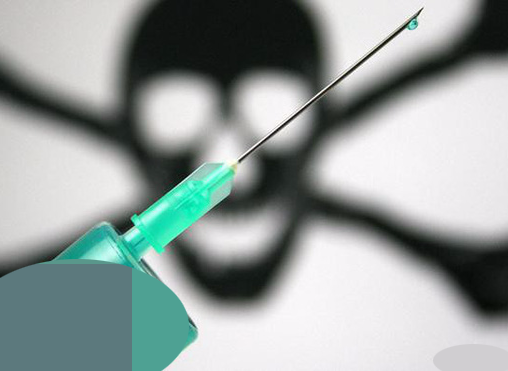Guidelines on Steps for Administering Injections in the Execution of Death Sentences Applied from April 15, 2020
Execution of the death penalty is the deprivation of the life of the person sentenced to death by the competent authority or individual in accordance with this Law.

Illustrative image (Source: Internet)
As stated in Article 6 Decree 43/2020/ND-CP guiding the administration of drugs in the execution of the death penalty, specifically, the officer directly executing the death penalty is responsible for performing the following steps:
- Prepare 03 doses of drugs (including 02 backup doses);
- Identify the vein for the injection; if the vein cannot be identified, report to the Chairman of the Execution Council to request a doctor to assist in identifying the vein;
- Insert the syringe, already connected to the drug transmission tube, into the identified vein according to the procedure:
- Step 1: Inject the drug to induce unconsciousness. After the injection, the specialized officer conducting the execution must check; if the convict has not lost consciousness, continue injecting until they lose consciousness.- Step 2: Inject the drug to paralyze the motor system.- Step 3: Inject the drug to stop the heart's activity.
- Check the heart activity of the convict through an electrocardiogram. If after ten minutes the convict has not died, the checking officer must report to the Chairman of the Execution Council to order the use of backup drugs;
Each time a drug is injected, if after ten minutes the convict has not died, the checking officer must report to the Chairman of the Execution Council to order continued use of the second and third backup doses; if after ten minutes of injecting the third dose the convict has not died, the Execution Team Leader must report to the Chairman of the Execution Council to decide to temporarily halt the execution.
Additionally, the procedure for administering drugs in the execution of the death penalty must comply with the following regulations:
- The sequence of execution must be carried out in accordance with the provisions of Clauses 2, 3, and 4 of Article 82 Law on Execution of Criminal Judgments 2019 and the provisions of this Decree.- The drugs used for execution must be checked, unsealed, and documented by the Execution Council as prescribed.- The convict must be securely fixed to the bed in a supine position to ensure unobstructed blood circulation.- The tasks specified in Points b, c, and d, Clause 4 of this Article may be carried out automatically or manually.- Upon the order of the Chairman of the Execution Council, the forensic doctor shall check and determine the condition of the convict and report the results to the Council.- After the forensic doctor concludes that the convict has died, the execution officer shall, upon the order of the Chairman of the Execution Council, stop the injection and remove the syringe and tubes from the convict.- The Execution Council shall document the death of the convict as prescribed.- Procedures following the death of the convict shall be handled according to Points e, g, and h, Clause 4 of Article 82 and Article 83 of the Law on Execution of Criminal Judgments 2019.
Details can be found in Decree 43/2020/ND-CP effective from April 15, 2020
Le Hai
- Number of deputy directors of departments in Vietnam in accordance with Decree 45/2025/ND-CP
- Cases ineligible for pardon in Vietnam in 2025
- Decree 50/2025 amending Decree 151/2017 on the management of public assets in Vietnam
- Circular 07/2025 amending Circular 02/2022 on the Law on Environmental Protection in Vietnam
- Adjustment to the organizational structure of the Ministry of Health of Vietnam: Certain agencies are no longer listed in the organizational structure
- Vietnam aims to welcome 22-23 million international tourists in Vietnam in 2025
-

- Notable new policies of Vietnam effective as of ...
- 16:26, 11/04/2025
-
.Medium.png)
- Notable documents of Vietnam in the previous week ...
- 16:21, 11/04/2025
-
.Medium.png)
- Notable documents of Vietnam in the previous week ...
- 16:11, 02/04/2025
-
.Medium.png)
- Notable new policies of Vietnam to be effective ...
- 16:04, 02/04/2025
-
.Medium.png)
- Notable new policies of Vietnam effective from ...
- 14:51, 21/03/2025
 Article table of contents
Article table of contents
